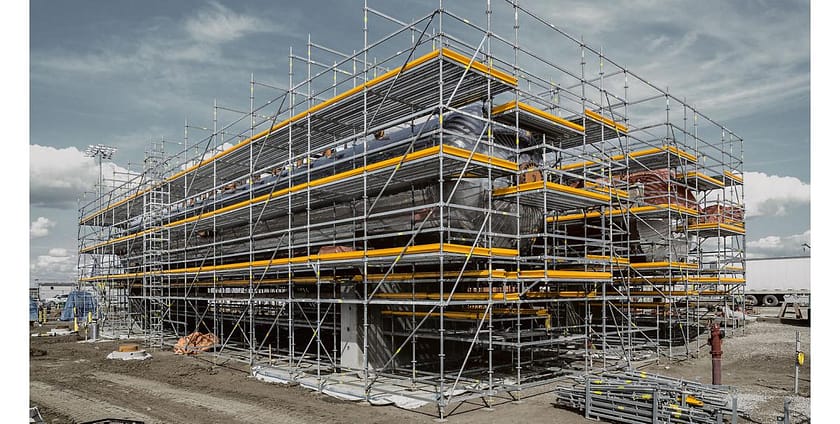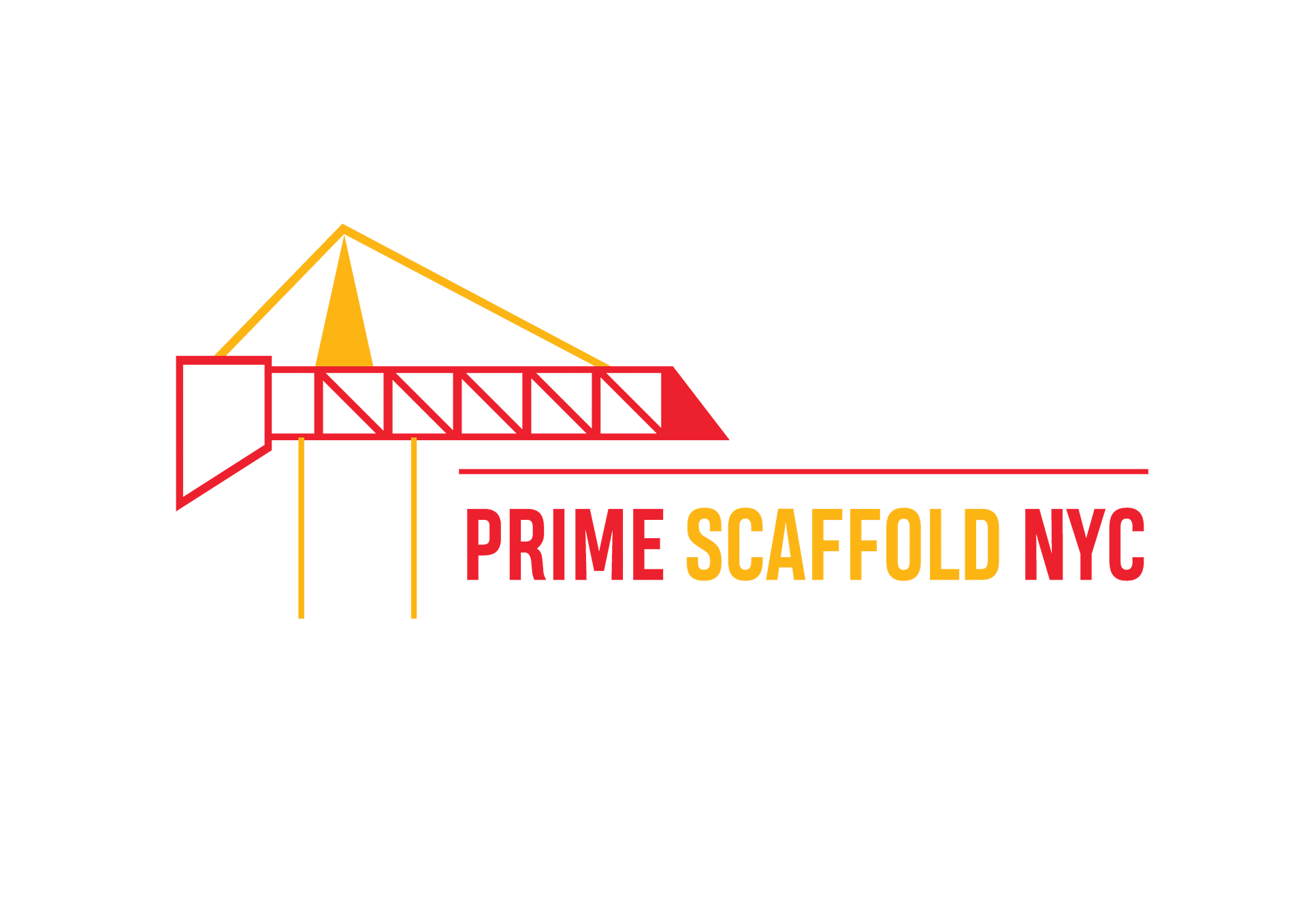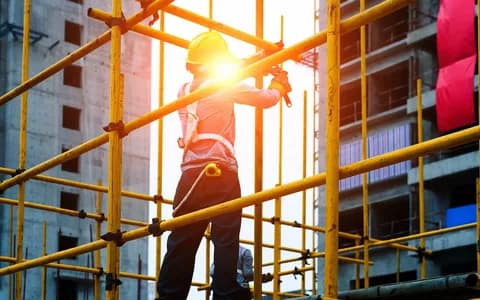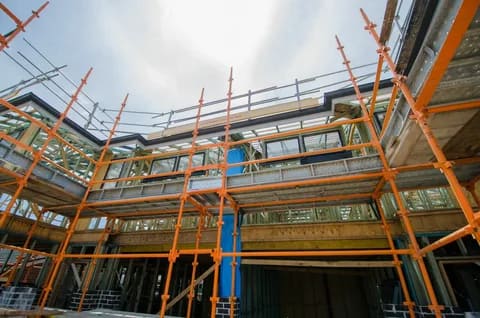
Introduction: The Iconic Scaffolding of New York
Walk down any street in New York City, and you’ll notice a defining feature of its urban landscape: miles of scaffolding and sidewalk sheds covering sidewalks, storefronts, and building facades. For residents, tourists, and business owners alike, scaffolding has become a permanent backdrop to city life.
But why is there so much scaffolding in NYC compared to other global cities? The answer lies in a mix of safety regulations, aging infrastructure, construction demands, real estate dynamics, and city policies. This article explores the history, laws, economics, and cultural impact of scaffolding in New York City.
The Scale of Scaffolding in NYC
- As of 2025, NYC has over 300 miles of scaffolding installed at any given time.
- Sidewalk sheds cover more than 400,000 linear feet of sidewalks.
- Some sheds stay up for years—sometimes decades—due to ongoing façade repairs and compliance inspections.
Scaffolding in NYC isn’t just for new construction projects. It’s often mandated by law for maintenance, repairs, and inspections, making it one of the most regulated and visible aspects of urban infrastructure.
Local Law 11 (FISP): The Core Driver
The biggest reason scaffolding dominates NYC’s skyline is Local Law 11, officially called the Façade Inspection Safety Program (FISP).
- Introduced in 1980 after a tragic incident where a piece of building masonry fell and killed a pedestrian.
- Requires that all buildings over six stories undergo façade inspections every five years.
- If inspectors identify unsafe conditions, the building owner must erect scaffolding immediately to protect pedestrians until repairs are complete.
- These protective scaffolds, called sidewalk sheds, often remain for months or even years while owners coordinate repairs, funding, and permits.
The Role of Aging Infrastructure
New York is a city of old buildings. More than 75% of its structures were built before 1960, many with stone or brick facades prone to weathering.
- Freeze-thaw cycles cause cracks and loose masonry.
- Pollution accelerates deterioration of materials.
- Historic architecture requires delicate, time-consuming repairs.
Because of Local Law 11, building owners must proactively erect scaffolding for inspection and safety, leading to the appearance of “permanent scaffolds” around many older properties.
Scaffolding for New Construction & Renovations
Scaffolding isn’t only about safety it’s also essential for:
- New developments: high-rises, office towers, residential projects.
- Renovations: upgrading interiors often requires exterior support.
- Commercial maintenance: façade cleaning, painting, window replacement.
With NYC’s booming construction industry—worth over $60 billion annually—scaffolding is a fundamental tool of progress.
Safety and Legal Requirements
OSHA Standards
-
Federal Occupational Safety and Health Administration requires scaffolding compliance for worker safety.
-
Strict guidelines on guardrails, planking, load limits, and access.
NYC Department of Buildings
-
Local regulations mandate the installation of sidewalk sheds to protect pedestrians from falling debris.
-
Non-compliance results in fines that can reach thousands per day.
Liability
-
Landlords and developers face lawsuits if scaffolding isn’t erected in unsafe conditions.
-
Insurance companies demand compliance with safety laws.
Thus, scaffolding isn’t optional it’s legal protection.
The Economics of Scaffolding in NYC
Scaffolding is big business in New York.
- Average rental cost: $120–$150 per linear foot annually.
- Large property owners spend millions of dollars yearly just on shed rentals.
- Some landlords leave scaffolding up for years because removing and reinstalling costs more than keeping it in place.
This creates the phenomenon of “forever scaffolds,” frustrating residents but financially practical for owners.
Sidewalk Sheds: NYC’s Distinctive Look
What Are Sidewalk Sheds?
- Temporary protective structures built over sidewalks.
- Made of steel pipes, wooden planks, and green painted plywood.
- Required for any façade work above six stories.
Why So Many?
- By law, they must remain until façade repairs are complete.
- Some sheds cover entire blocks, creating dark tunnels over sidewalks.
Impact
- Businesses lose visibility under sheds.
- Pedestrians feel confined and unsafe at night.
- Yet, they save lives, preventing injuries from falling debris.
Cultural and Social Impact
Scaffolding has become part of NYC’s cultural identity.
- Artists use sheds as canvases for murals and installations.
- Fashion photographers shoot “urban grit” under scaffolds.
- Residents joke about giving tourists directions by scaffolding landmarks.
While frustrating, scaffolding is also woven into the aesthetic of New York street life.
Criticism and Controversies
Despite its necessity, scaffolding faces major criticism:
- Permanent Sheds: Some buildings leave scaffolding up for over a decade.
- Blight on Businesses: Storefronts hidden under dark tunnels lose foot traffic.
- Safety Paradox: Poorly maintained sheds sometimes collapse themselves.
- High Costs: Tenants argue landlords delay repairs due to expense.
City officials call scaffolding a “necessary evil,” sparking debates about reform.
Reform Efforts:Get Sheds Down
In 2023, NYC launched the Get Sheds Down initiative to tackle the problem of lingering sidewalk sheds.
- Pushes landlords to complete repairs faster.
- Introduces fines for long-term shed installations.
- Encourages new materials and designs for safer, more aesthetic sheds.
This reflects growing pressure to balance safety with city beauty and business needs.
Innovations in Scaffolding
The scaffolding industry is evolving:
- Modular Systems: Faster to assemble and dismantle.
- Eco-Friendly Materials: Aluminum and composites reduce weight and waste.
- Smart Scaffolding: Sensors track structural stability.
- Aesthetic Sheds: Transparent or art-friendly designs improve urban experience.
NYC is testing alternative designs to reduce the negative visual impact.
Comparison: NYC vs. Other Cities
Why does New York have more scaffolding than, say, London or Paris?
- Strict Laws (Local Law 11): Unique to NYC.
- Density & Height: Tall, aging skyscrapers concentrated in dense areas.
- Litigious Culture: Higher risk of lawsuits drives overcompliance.
Thus, scaffolding is more ubiquitous and long-lasting in NYC than elsewhere.
Future of Scaffolding in NYC
Looking forward:
- Policy changes may shorten scaffold lifespans.
- New materials may reduce costs and improve aesthetics.
- Digital monitoring may make inspections faster and safer.
But as long as buildings need maintenance and safety laws exist, scaffolding will remain a constant feature of NYC’s skyline.
Conclusion: A City Built Under Scaffolding
So, why is there so much scaffolding in NYC?
Because it protects people, preserves buildings, complies with laws, and enables progress.While often seen as a nuisance, scaffolding reflects the unique challenges of maintaining a vertical city with historic architecture. From safety to culture, it is both a burden and a lifeline. Until regulations change and innovations spread, scaffolding will continue to define the look and feel of New York City’s streetscape.
- By: Addaim
- 0 comment



Leave a Reply